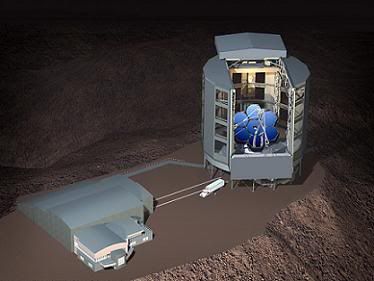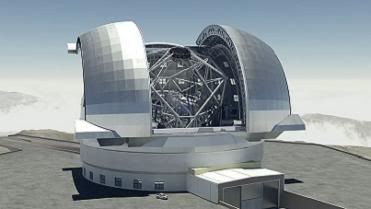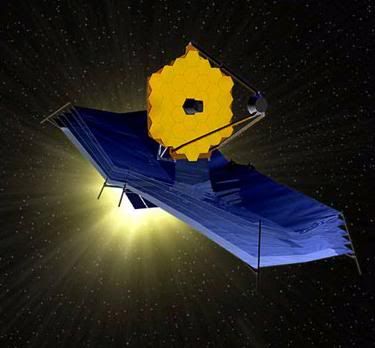Post by glactus on Jun 11, 2011 10:12:54 GMT

The Magellan very large telescope
The Giant Magellan Telescope (GMT) is a ground-based extremely large telescope planned for completion in 2018. It will consist of seven 8.4 m (27.6 ft) diameter primary segments, with the resolving power of a 24.5 m (80.4 ft) primary mirror and collecting area equivalent to 21.4 m (70.2 ft) one. The telescope is expected to have over four times the light-gathering ability of existing instruments.

The European extremely large telescope
The European Extremely Large Telescope (E-ELT) will be a ground-based astronomical observatory with a 42-meter diameter segmented mirror. The design features a filled aperture mirror with an area of 1,300 m². On 26 April 2010, the European Southern Observatory (ESO) Council selected Cerro Armazones, Chile, as the baseline site for the planned E-ELT. The telescope's "eye" will be almost half the length of a football pitch in diameter and will gather 15 times more light than the largest optical telescopes operating today. The telescope has an innovative five-mirror design that includes advanced adaptive optics to correct for the turbulent atmosphere, giving exceptional image quality. The main mirror will be made up from almost 1000 hexagonal segments. When completed it will become the largest of a new generation of Extremely Large Telescopes

The James Webb space telescope
The James Webb Space Telescope is a large, infrared-optimized space telescope, scheduled for launch in 2014. Webb will find the first galaxies that formed in the early Universe, connecting the Big Bang to our own Milky Way Galaxy. Webb will peer through dusty clouds to see stars forming planetary systems, connecting the Milky Way to our own Solar System. Webb's instruments will be designed to work primarily in the infrared range of the electromagnetic spectrum, with some capability in the visible range. Webb will have a large mirror, 6.5 meters (21.3 feet) in diameter and a sunshield the size of a tennis court.
To see high class movie click on the URL below. Has sound.
www.youtube.com/watch?v=lhlnQijoeLs&feature=player_detailpage
Looking at the James Webb Telescope
Credits: These are non copywrite images
Text by Wikipedia
Movie by Youtube
Telescope in Avatar: Meade 16" LX 200.


